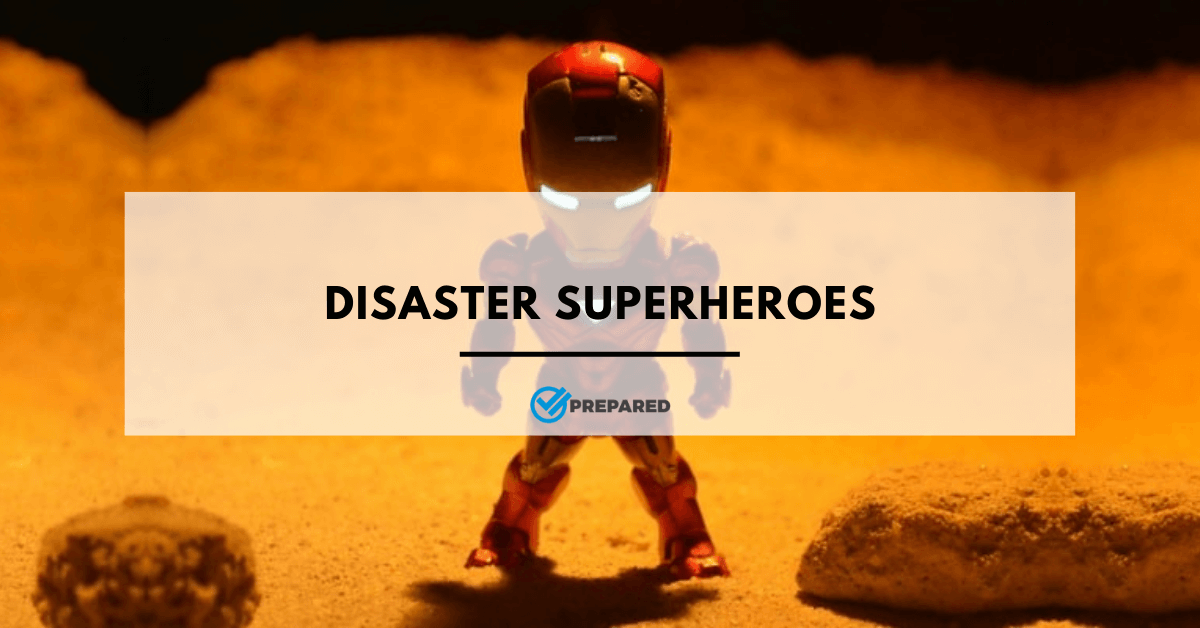You might wonder why a blog on disaster resilience is publishing an article on wearable technology and sensory enhancements. The reason is simple. Often survivalists are focused on saving themselves for a variety of reasons. We can’t afford to buy enough food to feed a whole community. We can’t afford to buy a shelter that will fit the whole community. Worse yet, we can’t force our community to prepare for disasters.
However, there are a number of ways that preppers can become superheroes for their communities in case of disasters. Technology is driving much of this opportunity, and wearables are one of the dominant technology types making this practical. Using wearable technology, we can augment our senses to enable us to thrive in disasters. Whether you are searching for survivors or leading them to safety, in the future you might be able to use these technologies to help you navigate safely.
The Dentist Chair
First, let’s cover a bit of explanation and history about sensory substitution. Sensory substitution is substituting one sense for another. It is about tricking one of your senses to communicate to your brain in a similar way to another sense. For example, Marvel’s Daredevil sees with his ears because of his sonar sense.
Paul Bach-y-Rita conducted experiments to help people with blindness ‘see’ objects. He sat them in a dentist chair equipped with a machine that poked them at multiple points on their lower back. The machine was connected to a video camera. The shape of an object was communicated to the person in the dentist chair. After training and time to acclimate to the technology, the participants were able to effectively ‘see’ the objects displayed to the camera.
Bach-y-Rita started this back in the 1960s. It was the first time people tried to artificially augment their senses to do unconventional things. Sensory substitution is still a novel idea, but wearable technology is making it practical.
Spidey Senses
One of the most obvious examples of wearable technology augmenting your senses for disaster situations is the SpiderSense suit. The name of the garment is taken from Spiderman when his spidey senses are tingling. It was conceived to help people with blindness navigate their environment.
However, it could work for any situation in which someone is visually impaired such as smoke filled buildings or a moonless night without lights. This garment even has the potential to enhance your situational awareness by alerting you to oncoming hazards such as falling debris or someone walking behind you. If someone is meant to be walking behind you, you could keep your senses alerted to their actions. Otherwise, you are less likely to be surprised by someone or something behind you. Check out the official website, and you can sign up for one of the first products to market.
Art for the Ears
Wearable technology is also enhancing senses without substitution. Eidos was an art project in 2012-2013. The device gave wearers the ability to manipulate their senses. The aspect of the device that is interesting for disaster response is the hearing device. It allows the wearer to isolate themselves from the noises around them. Then, they can focus on a speaker or another noise-maker they want to listen to by using a microphone that can focus in one direction.
The wearer could walk through a busy train station while listening to their friend speak to them from several metres away. They could also run through a warzone while hearing everything their leader said with no harm to their ears.
Pro Ears’ products are real consumer devices that are similar. They will protect your ears from loud noises like gunfire while allowing you to still listen to your environment. The wearer can adjust the volume and potentially hear better than without the headset. Disaster situations can wreak havoc on the sense of hearing, and these devices can allow the wearer to better focus their senses.
Magnetic Direction
North Sense is another vibrating wearable technology, but this one augments your senses to enable a sixth sense. It grants wearers the ability to feel the nearest magnetic pole or nearer magnetic fields. In disaster situations, you can use a compass – or you could be the compass.
If you don’t like the idea of piercing yourself for the sake of magnetic sensing, perhaps you would prefer the Tongueduino. This time you stick the wearable in your mouth and allow the sensors to communicate with your tongue.
Do you not need to feel magnetic north? Connect the wearable to a waypoint. If GPS is still functioning, the wearable will lead you to your destination. Even if GPS is down, it could direct you to a survivor in trouble if they have a tracking device.
Feeling the Data
The VEST is yet another vibrating wearable, but this time it has the potential to communicate a wider range of information. The idea behind it is that you can teach your skin to see for you. You might even learn to read through your skin or hear with your back.
David Eagleman and Scott Novich have taken Bach-y-Rita’s ideas to the next level with the VEST. The VEST uses vibrating motors instead of pointers. The researchers’ company, Neo Sensory, is currently focused on helping the deaf community to hear with their skim. Eventually, they think the technology could help anyone perceive various types of data, even a stream of stock prices or seeing in infrared. It could even be connected to a gas sensor to communicate harmful emissions.
Clearly, this device will require more practice than the other 3. However, it is also versatile enough to handle any data feed regardless of whether it is audio, visual, olfactory, text or digital. That makes it more adaptable to any disaster situation.
You could even connect it to a check-in app where people in the area can check in when they are safe. Then you could monitor it for your loved ones. You could also monitor an emergency line for locating survivors.
What’s the point?
In times of disaster, every second counts. In order to survive, you will need as much information as you can handle to assess how best to respond. Depending on the situation, you may not have time to get to your shelter where you have your food stocks. You could be left in pitch black or even caught in a situation where distractions are shaking all of your senses.
You could use all 4 of these devices without ever using your hands. That means your hands will be free to do other things. You could sense the world around you, hear better while protecting your ears, get directions to your destination, and monitor an event feed.
Wearable Technology: Are you serious?
Granted, it might still take some time for wearable technology and sensory enhancements to be available in the form of a reliable and robust piece of equipment, suitable for use during disaster response. But the current research is opening up some interesting opportunities. In future, don’t be surprised if you see these technologies frequently being used, similar to how drones and thermal imaging cameras are used in search and rescue operations today.

Dennis Draeger is the research director for Shaping Tomorrow, https://shapingtomorrow.com/. He has over 15 years’ experience in business start-up, management and consulting. He has helped clients around the world think more effectively about the future. To see some of his other work, visit Aiglatson Foresight Research, https://aiglatsonforesight.com/.

